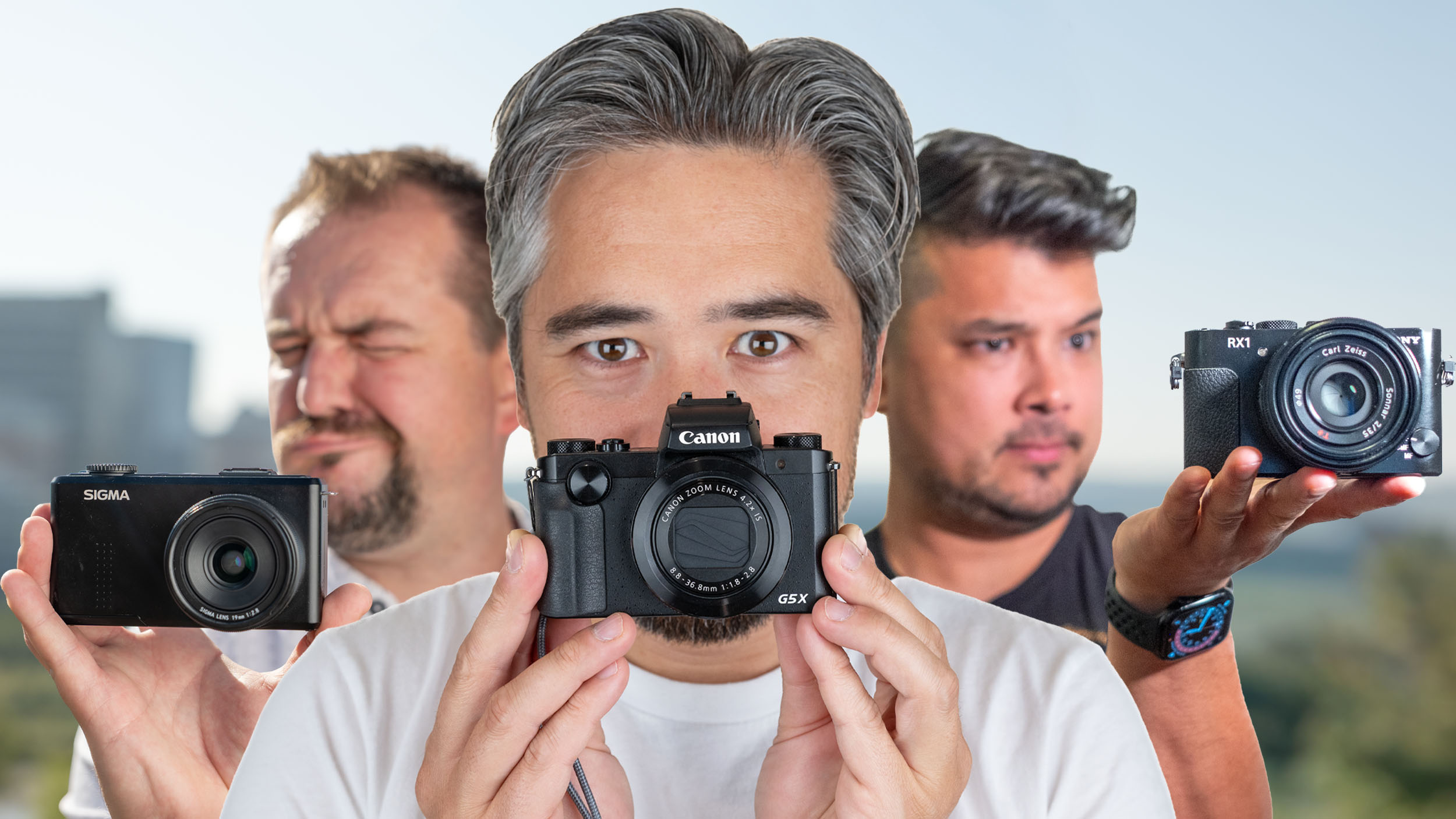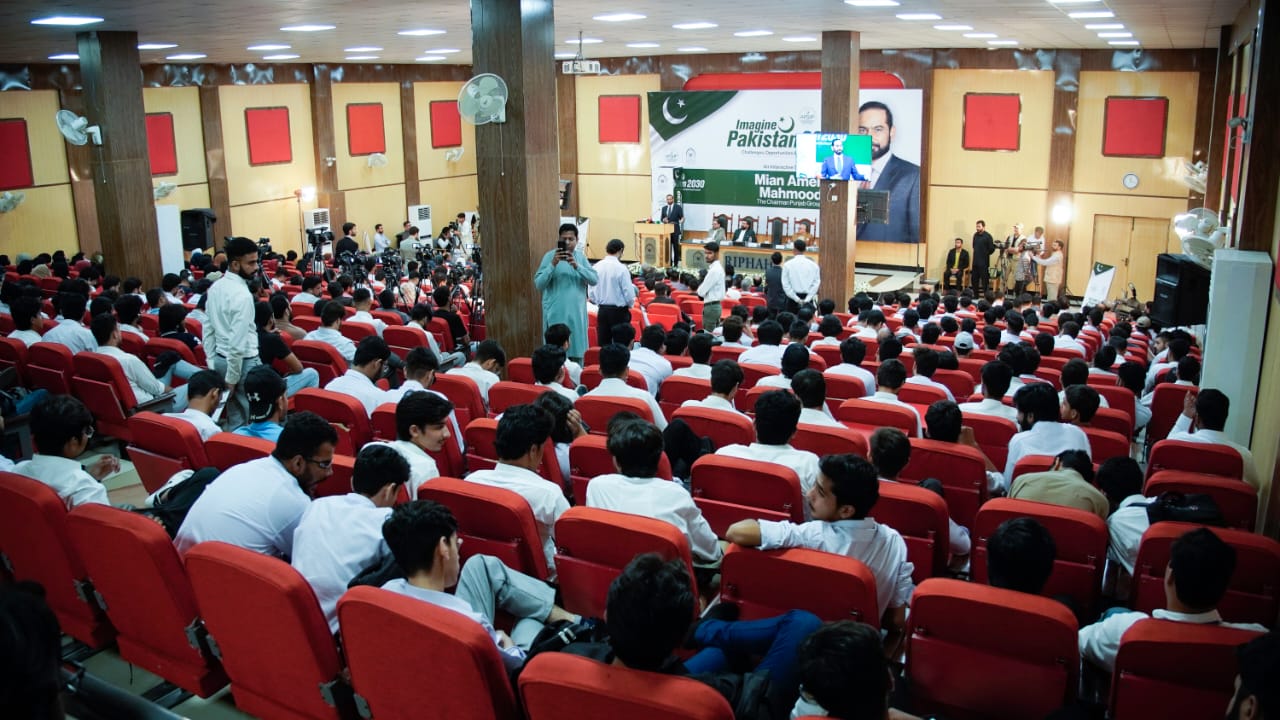
Earlier this summer, Chris Niccolls, Jordan Drake, and I browsed the fixed-lens section of KEH’s website to see what was available for a reasonable price. With compact, point-and-shoot cameras suddenly exploding in popularity, we were wondering: have they aged well, or is it just nostalgia?
Compact cameras are all the rage right now. Fujifilm got things started with the X100 series and the success of the V and then the VI had manufacturers scrambling to restart production that they had years ago shuttered.
With few new options on the market that are reasonably priced, we decided to try out some classics to see how they held up. Chris selected the Canon PowerShot G5X, Jordan decided to give the Sigma DP1 Merrill a shot, and I spent some time with the Sony RX1. So, how did they fare?
Canon PowerShot G5X Revisited: Lots to Love
Section by Chris Niccolls
I consider the Canon Powershot G5X unappreciated because ever since its 2015 release, the camera has been maligned for having a so-so lens and poor battery life. The camera was popular enough to bring about the G5X II, which did bring some improvements, but never really made a big splash when it debuted. Oddly, it remains largely unappreciated today, amidst the incredibly popular point-and-shoot renaissance. The current Powershot G7X II, for example, cannot be made quickly enough to satisfy global demand.
While every other compact camera seems to skyrocket in price on the used market, the G5X largely stays steady. Sure, the G5X pricing has begun to steadily rise, but good deals can still be found on lightly loved examples. When PetaPixel decided to do a look back at retro compact cameras, I jumped on an affordable Canon G5X KEH had in stock and available for just under $600, and it was in what I would consider very good shape. A trip to Tokyo, Japan, provided a great backdrop for some testing and even a little bit of fun.
I chose the G5X for myself because I always want an EVF, and the G5X has a sort of faux-DSLR-positioned EVF on the top of the camera. Despite the relatively small and lightweight 13.3 ounces (377 grams), there is a nice grip on the front of the camera, and enough space to mount the EVF where a pentaprism would normally go. At 2.36 million dots, the EVF isn’t exactly amazing, but let’s also keep in mind that many entry-level cameras today rarely go higher.
The G5X also uses a fairly large Type 1 BSI sensor, which provides a noticeable difference in image quality over the plethora of smaller point-and-shoot sensors on the market. This is the same sensor found in the early Sony RX100 cameras, and provides decent low-light performance and an excellent 20 megapixels of resolution. The lens gives a full-frame equivalent range of 24-100mm and a pretty quick f/1.8-2.8 aperture range. From a street shooting and travel standpoint, I consider these specs just about ideal for a small companion camera.
With this camera, I also get full manual control, a nice mode dial on top, and very comfortable command dials. I especially like the front-mounted vertically-oriented dial, which is very natural to utilize. There is also a front command ring around the lens, a full-featured hot shoe, an image-stabilized optic, and a built-in ND filter for shooting wide apertures on bright days.
The back LCD fully articulates, and you get an intuitive touchscreen interface, which Canon has always excelled at producing. Essentially, I get an intuitive, creative camera with a compact body, and I don’t feel like I’m missing out on much. Before starting this project, I looked at the G5X as an option, and immediately recalled that the ergonomic experience was one of the best I’d ever experienced on a camera, some ten years later.
This camera is not without its faults. At the time that it came out, it had some lackluster performance issues, but I would start by arguing that these were more apparent back in 2015 than they are now. Nowadays, people are looking for the point-and-shoot vibe, and they want the look of electronic flash and a less polished feel to the images.
The lens, for example, had some flare issues, and the chromatic aberrations present robbed the images of some detail. However, the larger sensor still gives images that will be a noticeable improvement over other pocket cameras, and the Canon color is always popular. I like the images that the G5X gives, and I always have the option to shoot raw files with more room to play.
On the topic of RAW files, another major issue with the G5X was its rather fast, almost six frames per second JPEG burst rate dropping to a paltry one shot per second slog in RAW mode. I don’t know that this is a major consideration for casual users, but I did occasionally struggle a little with this. Focusing is fine in one-shot mode, but like most similar cameras of the era, it is disappointing in terms of continuous and tracking situations.
Still, I feel like the kind of photographers who are attracted to compact point-and-shoots are expecting, and even wanting, some limitations to work around, and the fun vibe that comes with this kind of experience. Many of these challenges can be seen as quirky nowadays rather than the letdowns they were in the past. Getting only 200 shots on a full battery charge does suck as much now as it did before. But overall, the G5X is a comfortable and capable little camera.
What no one wants is a camera that is a pain to use, and the Canon PowerShot G5X acquits itself admirably, as much as it did in the past. It provides a fun experience in a package that is pocketable. As a more experienced photographer, I also get to enjoy some of the more creative capabilities and better image quality that this camera can deliver.
Perhaps, in the end, the most important thing I can say about the G5X is that I immediately recalled and relived the enjoyment that this camera brought me almost a decade ago but I got to look at it with the fresh eyes of someone who realizes how spoiled we are nowadays for camera performance, and how quaint and refreshing a less-than-optimal camera setup can be now. Good images have always come from the eye of the creator, and not so much the camera.
Sigma DP1 Merrill Revisited: Is Sacrificing for Foveon Worth It?
Section by Jordan Drake
When we decided to pick a classic compact camera from the past, my top priority was finding something that would give me a completely unique shooting experience. That led me to the Sigma DP1 Merrill — which costs under $700, making it the most affordable of the three we looked at. It released in 2012, and I picked it because I’ve never had the chance to play with a Foveon Sensor camera. What makes Foveon special is that the red, green, and blue channels are all recorded separately, instead of in Bayer pattern interpolation, which does reduce detail. Essentially, Foveon sensors trade high ISO performance for base ISO detail, which theoretically makes them outstanding landscape cameras.
The DP1 Merrill is a fixed lens compact with an APC “45 megapixel” (actually, three layers of 15-megapixel red, green, and blue sensors) with a 19mm f/2.8 lens, giving a 28mm full frame field of view. I actually owned the E-Mount version of the Sigma 19mm f/2.8 lens that was released separately, and I always found it to be an excellent performer. I thought it would be fun to reunite with that lens and see how it performs when combined with the demanding Foveon sensor.
Chris warned me that there would be two great struggles: the terrible battery life and the Sigma Photo Pro software. True to his predictions, the included battery was only good for 20 or so shots, but I bought some Wasabi replacement batteries, which gave me around 50 shots each, which was fine for taking the odd landscape or detail shot while out and about. As far as software, I initially thought I could bypass Sigma Photo Pro, as I remembered DNG support being added to Foveon cameras. Sadly, that was only for the bizarre-looking Quatro series, so Sigma’s proprietary software would be my only option for RAW processing. More on that in a bit.
In terms of handling, the Sigma is an enjoyable camera to use. Key exposure adjustments can be made quickly, and the menu is a wonderful reminder that modern camera menus have gotten overly complex. Autofocus, though, can only be described as bad. Using a single point focus and recompose technique, the camera would often just give up on any attempt to focus, even on contrasty subjects. Fortunately, manual focus is possible, and the focus ring around the lens makes nailing focus quick and intuitive. As a result, I stuck to manual focus primarily during my time with the camera. The most jarring part of shooting was actually the write speed. Even using a fast card, the camera could not be shut off for several seconds after taking a shot.
In terms of image quality, the DP1 Merrill lives up to its reputation in terms of resolution. As long as a very fast shutter speed or a tripod is used, there is a truly impressive amount of natural detail to the photos. The 19mm f/2.8 lens I remembered so fondly is a truly excellent performer.
Unfortunately, the lack of any sort of stabilization and the small body mean camera shake kept quite a few of my photos from living up to the potential of the sensor. When shot on a tripod, though, I was surprised to find the Sigma images were noticeably sharper than those from the brand-new, 26-megapixel Ricoh GR IV.
However, one issue caught me off guard. While shooting, I found that I was constantly pushing my exposures to the edges of the histogram. I expected to be able to underexpose and bring shadows up like I do when encountering contrasty scenes with most modern cameras, but there was very little shadow detail preserved when boosting shadows with Sigma Photo Pro, even at 100 ISO.
Highlights that appeared clipped in the previews were indeed clipped in the RAW image. Basically, the files have very little dynamic range, which is incredibly important when shooting landscapes. Following Chris’s advice, I tried exporting the RAW files with Sigma Photo Pro into TIFFs and editing those in Capture One.
I was surprised to find a tiny bit more recoverable information in the shadows when I did this. Not enough to change the way I shoot, but it’s rare to see a manufacturer’s software not offer the best results possible from a camera’s RAW images. When comparing dynamic range, the advancements made in modern sensors were clear, with the Ricoh GR IV offering substantially more latitude when editing.
Overall, the Sigma DP1 was a fun experiment, but for a travel landscape camera, I’d be willing to accept a slightly softer image for more dynamic range. That’s why the Sigma DP1 won’t be my new everyday carry. Still, it was cool to see that the resolution advantages of Foveon are still relevant today.
Sony Cyber-Shot RX1 Revisited: Beautiful Photos, Bland Experience
Section by Jaron Schneider
I’ve spent a couple of months with the Sony RX1 — which is regularly available from KEH starting for around $750 — and believe I have an answer to the question, “has it aged well?” Yes, it’s still a remarkable little camera that takes excellent photos. While the RX1 is more than 10 years old, the 24-megapixel full-frame sensor inside it is still relatively familiar. Updated versions of it are still being used in cameras today, and there is a reason: it’s great.
I wouldn’t say it has “gobs” of dynamic range, but it has plenty. The files edit really nicely, and the color reproduction is lovely. 24 megapixels isn’t particularly high resolution, but it’s generally enough for my uses. That said, I do feel limited by how much I can crop. My Fujifilm X100 VI has spoiled me.
Speaking of the X100 series, the RX1 was originally brought to market to compete in the same space as Fujifilm’s popular compact, fixed lens camera, and as such, its lens is very similar to Fujifilm’s 35mm f/2 — that is to say, it is also a 35mm f/2 Sonnar lens from Zeiss. It has a pretty neat little trick, though, in the form of a close focusing clutch that lets you get as close as 0.2 meters (7.8 inches) from a subject. When wide open, that means you can get some really lovely, detailed shots with beautifully shallow depth of field. I find it is particularly lovely for flowers.
Battery life is solid, honestly. Well, maybe that’s because I always turn it off when I’m not actively taking a photo. The NP-BX1 doesn’t have a ton of juice, so it will die on you if you aren’t judicious with that off switch. It will also slowly bleed, so if you leave it on a desk and don’t come back to it for a week, don’t expect to find it charged.
Also, every time the battery dies or is removed, the camera brings up the “Set Date/Time” request. I did it correctly the first time I fired up the RX1, but have just mashed “set” every other time since. It’s odd, since the camera remembers every other setting, just not where and when it is.
The RX1 has a nice little pop-up flash (which I basically never use, but I’m glad it’s there), plenty of dials and buttons so I never feel like I can’t get it to do what I want it to do quickly, and a nice clicked aperture ring. I appreciate the focus type dial on the front of the camera, although I understand why Sony eventually moved away from it; I don’t use it much.
On that note, the RX1 has Sony’s older, poor menu system, but as bad as it is, once you have the camera set up the first time, you really never have to go back into it. I have delved into that menu one time since I’ve had it, and that was on day one when I customized the settings.
Yes, this is still a lovely little compact camera. The thing is, I just don’t like it.
Sure, if you like a little rectangle that takes pretty pictures, the RX1 fits that description perfectly. I just don’t feel anything when I hit that shutter button. That might sound pretty pretentious, but I’ve gotten to the point in my photographic career that I want a camera to encourage me as an artist. The RX1 doesn’t do that. It’s just a recording box.
Maybe that opinion is driven by the fact that the rear LCD is just not cutting it for me. It doesn’t articulate, and it’s not particularly bright, meaning it’s downright useless on sunny days. I honestly can’t tell if a photo is in focus or not when I’m out and the sun is high in the sky. There is no EVF to assist with this problem either, although you can get an optional shoe-mounted OVF that I also don’t like very much. It makes the camera an odd shape, catches on everything it touches, and never feels particularly secure. I thought I would use it a lot, but I almost always leave it at home.
That rear LCD doesn’t even do justice to the photos the RX1 takes. I felt like everything I captured was really bland and dull when I checked them in the field, but I was very happy with the RAWs once I got them back to my computer. Not feeling excited about what I’m capturing at the moment, I’m doing it has a big downside: it doesn’t encourage me to take more photos.
All of these complaints I would have had back in 2012 when this camera came out, so I stand by my initial statement that the RX1 has aged quite well. It’s just not the camera for me.
Those are our thoughts on just three of the many more point and shoots from decades past worth revisiting. They certainly still have their merits, and we’re interested in checking out more in the future.



